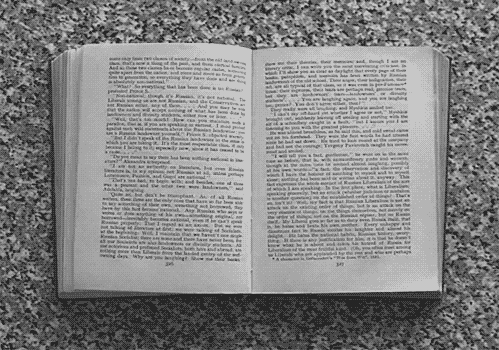Next Level Reading: The Four Levels of Reading you need at University
Reading isn't simply a way to consume information - it is a skill that allows us to process, analyse and critique arguments. Here we take a look at the four levels of reading you need for success.
If you’re reading this article, then you know how to read. Or, at least, you know how to read in a certain way.
But at university, we have to read a lot. For students in their final year of study or on Masters degrees, reading a vast amount is essential for the Literature Review component of the dissertation.
There are four different levels of reading which we must master if we are to read efficiently, effectively, analytically and critically.
Many of us don’t understand that there are different ways of reading, depending on what we are doing. For example, reading for pleasure is very different to reading for work. Reading to relax is very different than reading to evaluate. At university, and throughout our professional careers, there are four different levels of reading which we must master if we are to read efficiently, effectively, analytically and critically.
These levels of reading will not only help you during your studies here at Edge Hill University Business School, but also once you graduate and begin climbing the career ladder.
Level 1: Elementary Reading
This is the most basic level of reading, where we read to understand. You’re doing this now. You’re doing this when you read a newspaper, a novel, a magazine, or an email.
Elementary reading is reading to understand, for pleasure, or out of interest. Everyone who arrives at university has this skill already.
Unfortunately, this type of reading is insufficient in situations - like university or at work - where you have to process a significant volume of information.
Level 2: Inspectional Reading
Inspectional reading is a vital tool for evaluating the relevance of materials. When we do inspectional reading, we’re trying to assess whether the book/journal article is worth the time and effort to read more deeply.
Inspectional reading involves systematic skimming and superficial reading.
Systematic skimming is where we explore the table of contents, index, cover/abstract/executive summary - and quickly try to understand the content of the material. If the book/article is not relevant, we put it aside and don’t go any further. If its relevant, we move onto the next step…
Superficial reading is where we read rapidly. No note taking. No thinking about the argument. Read something you don’t understand? Don’t worry move on. Superficial reading is about getting a feel for the material. This helps later if we decide this is crucial material that merits analysis…
Level 3: Analytical Reading
Analytical reading requires us to undertake a deeper reading of a single text. But unlike elemenatary reading, we’re reading for a specific purpose.
The word “analysis” comes from the greek - meaning to “break down”, “unravel” or “investigate”.
When we analyse a single text, we are essentially deconstructing the author’s arguments and breaking it down into smaller pieces that we identify as important.
Generally speaking, there are four key objectives when we read analytically:
We should classify the text: what kind of book/article is it we are reading?
We identify the topic: what is the book/article about? How can we summarise this in the most succinct way?
We should evaluate the structure: how is the book/article structured, and how do those parts fit together to form a coherent argument?
We should define the problem the author is trying to address: what is the focus of the book/article? How does the author aim to understand/resolve/explore the problem?
This might seem very straightforward - yet covering these four steps will require you to read analytically, and understand not only what the author is saying, but how they support their argument and why their argument is/is not persuasive.
This allows us to critique the argument: we don’t just describe (the “what” of) the author’s argument, we are able to analyse (the “how” and the “why” of) their argument.
Level 4: Syntopical Reading
Syntopical reading isn’t focused on understanding a single text, but on developing our understanding of the subject more broadly.
When we undertake syntopical reading, we’re trying to process many different perspectives on a single topic - and this requires us to read many different sources simultaneously.
Syntopical is a portmanteau - a combination of two words. Synthesis + Topic = Syntopical.
While the third level of reading requires us to analyse - to break down - different texts, the fourth stage requires us to synthesize. Synthesis also comes from ancient Greek, meaning “to combine”.
So at this stage, we aim to take all our analyses of different texts and form them into our understanding. This is how we build our own, unique argument on a topic. Through analysis of multiple sources that we read simultaneously, building our broad understanding of the topic/subject.
Developing our reading skills is essential - and isn’t that difficult. But we must understand that reading has different forms depending on the reason we are reading.
At university, we are often reading for coursework assignments, exam revision, or as we conduct the literature review chapter of our dissertation.
Understanding how and why we need to read in different ways is essential. Moving beyond elementary reading to the more advance levels of inspectional, analytical and syntopical reading is essential for a more rewarding (and enjoyable) university education.
Click here if you want to read more on Clear Thinking, including more general discussion of these reading techniques.









